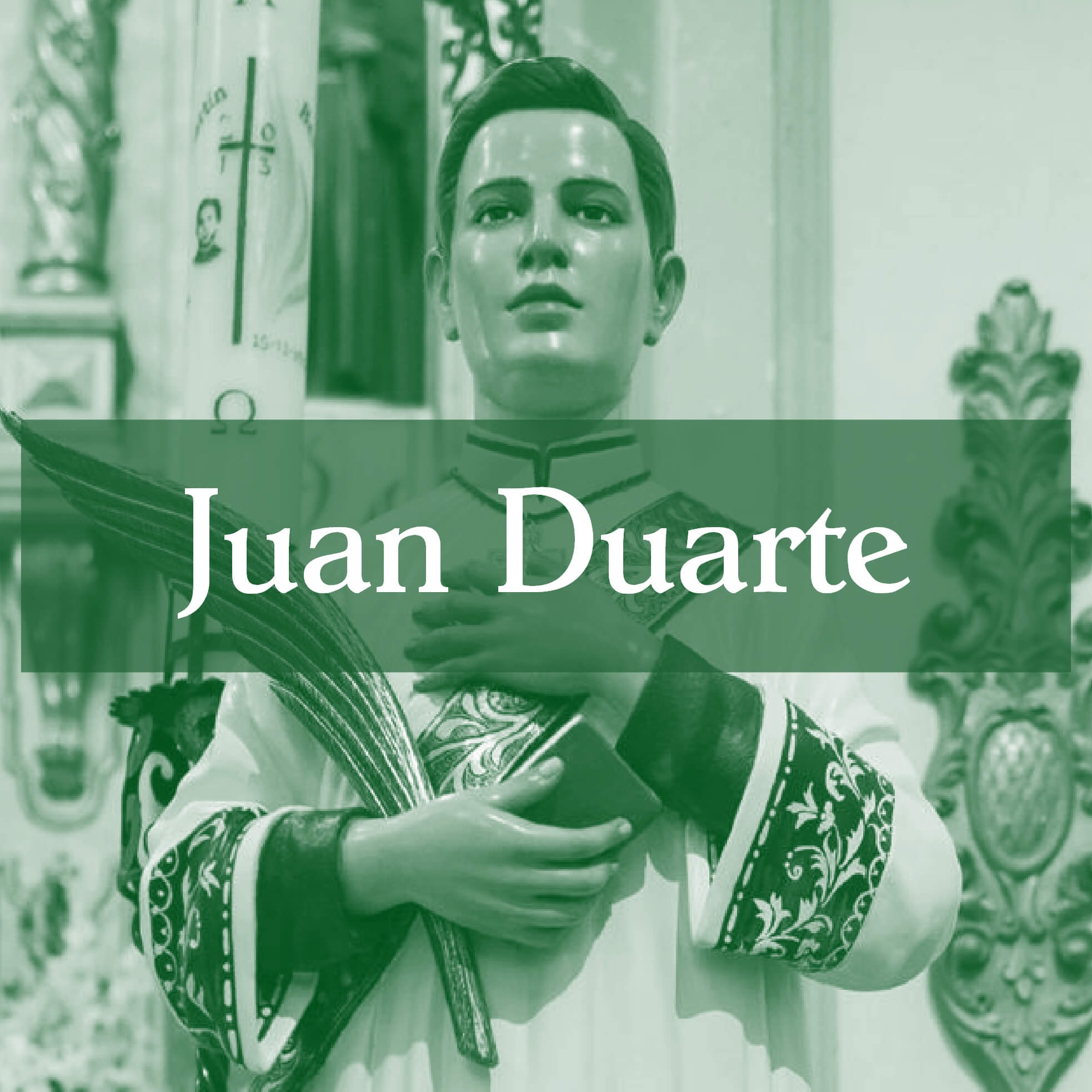Juan Duarte Martín (1912-1936) was born in the town of Yunquera in the province of Málaga. He entered the seminar at the age of thirteen. In March 1936 he was appointed deacon in the Cathedral of Malaga.
He showed a strong and determined personality after the outbreak of the Spanish Civil War, which placed Catholic religious as a target to beat by militia and revolutionaries.
He was arrested, tortured and killed by the militia at only 24 years old. Many years later, in 2007, he was beatified in Rome.
Life of Juan Duarte
What were his origins?
Juan Duarte Martín was born in the Malaga town of Yunquera on March 17, 1912, the fourth son of the marriage formed by Juan Duarte Doña and Dolores Martín de la Torre. His father was an autonomous and strong religious labrador, so he always felt very united with his son John, especially after communicating his decision to enter the seminary.
What was his life like before entering the Seminary?
Juan Duarte is baptized in March 1912 in the parish of the Incarnation in the town of Yunquera, where he will also receive the first Communion and subsequent confirmation.
From the age of four or five, Juan Duarte already showed signs of what his religious passion would be, as he spent a lot of time at home doing small altars and used to play with other children in the street doing thrones and simulating processions.
What was his life like at the Seminary?
At the age of thirteen, for the course 1925-1926, he entered the Seminary of Malaga, where he felt very comfortable and in which he found practically a new family. His own family recounted, that he came to count the days left to return to the Seminary when he was on vacation with his family in the village.
Another example of his vocation and love for the Seminary took place in May 1931, following the burning of convents, riots, looting and anti-clerical violence against Catholic Church institutions between 10 and 13 May 1931, A few weeks after the proclamation of the Second Spanish Republic, it was his father who asked him not to return to the Seminary until the political situation calmed down, but Juan Duarte was one of the few to return to the Seminary.
During his years at the Seminary, John was considered by many of his colleagues as a first class student and seminarian, as he always obtained maximum in his different grades. In his last year at the seminary he ended up being prefect of the minor seminarians, that is to say he was in charge of his education.
IN mid-1935, he received the sub-deacon, an order before the deacon, and a year later, in March 1936, he was ordained a deacon in the Cathedral of Malaga.
What aspects can we highlight about his personality?
As examples of his personality we can highlight his courage, especially in the delicate and convulsive moments that he had to live after the outbreak of the Spanish Civil War in July 1936, showing their continuity of wearing sotana down the streets until the last moment or in their refusal to hide in a clog prepared by their family. Another highlight of his personality was the frankness in expressing everything he felt and not keeping anything for himself, nor yielding to anything. This was probably one of the reasons why the militia went so far with him.
How were his last moments?
After being raided by a neighbor, he was arrested on 7 November 1936 by a group of militia, taken to the police station and from there to the town of El Burgo (Málaga), together with two colleagues who ended up being martired. However, Juan Duarte is transferred to Álora (Málaga) and locked in the municipal dungeon where he is subjected to torture in which he was tried to force blaspheme against his Catholic religion, without any success. These tortures consisted of daily beatings, electric shocks and walks around the municipality to be humiliated in front of the neighbors. Many of these neighbors, faced with such suffering, tried to talk to him to give up. Physical and psychological abuse continued with the attempt to be seduced by a young woman and her subsequent castration with a knife by one of the militia.
Finally, on November 15, 1936 he was taken to the Arroyo Spark, near the station of Álora. It is there that they lay him on the ground and with a machete they open him in a canal, fill him with petrol and fire him. He was only 24 years old
The following year, his family travels to Alora to exhumate his body that had been buried by the neighbors at little depth. He was transferred to the Yunquera cemetery on May 3, 1937, and transferred to the parish church on November 17, 1985 and finally beatified on October 28, 2007 in Rome.
For more information about Yunquera Village: visit the City Council page
Juan Manuel Lopez
